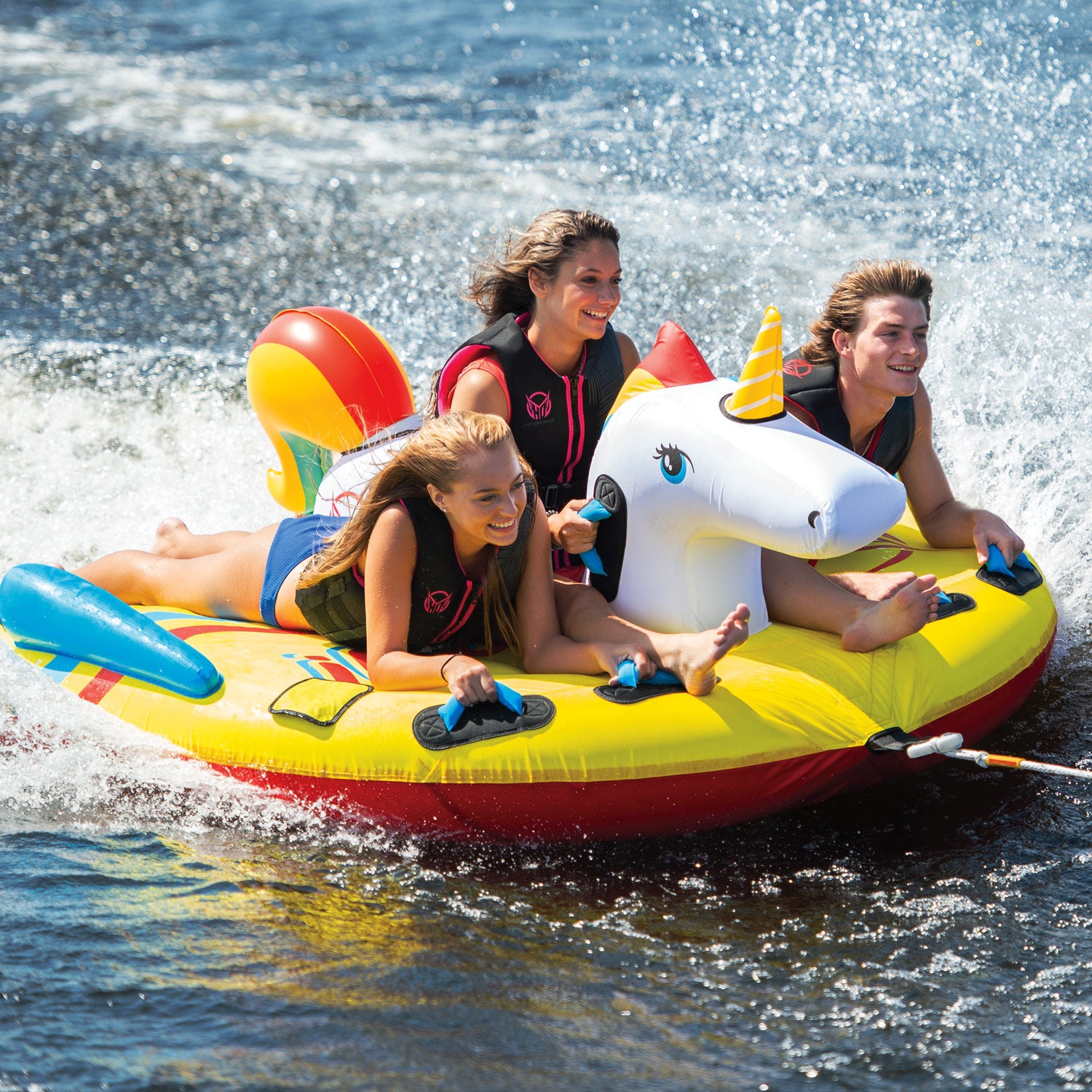Gifting has never been easier
Perfect if you're short on time or are unable to deliver your gift yourself. Enter your message and select when to send it.
The world of watersports has evolved, and foiling has taken centre stage as an accessible and thrilling activity for riders of all skill levels and best of all the easiest way to learn to foil is behind a boat. Whether you're a beginner eager to try something new or an advanced rider seeking the next challenge, wake foiling offers an exhilarating experience that can be done behind any boat, regardless of its wake size. In this blog, we'll delve into the basics of wake foiling, explore the key components of a wake foil, and guide you through choosing the perfect setup for your skill level.

What is Wake Foiling?
Wake foiling is a dynamic watersport that involves riding a board similar to a wake surfer equipped with a hydrofoil. This hydrofoil consists of several components, each playing a crucial role in lifting the board and rider above the water's surface. The primary components include the board, mast, fuselage, front wing, and rear wing.
Board: The wake foil board is similar to a wake surf board and designed to accommodate the foil assembly in fact some foil boards can be used as a surfer by just removing the foil assembly. Its unique shape enhances stability and control during foiling.
Mast: The mast is the vertical component that extends below the board and into the water. It connects the board to the fuselage and is available in various lengths, influencing the foil's overall performance.
Fuselage: The fuselage connects the mast to the wings and provides stability and balance to the foil. Its length and design impact the foil's maneuverability.
Front Wing: Positioned at the front of the foil, the front wing generates lift as water flows over it. Different front wing designs cater to various riding styles and skill levels.
Rear Wing: Located at the back of the foil, the rear wing counterbalances the lift generated by the front wing. It plays a crucial role in stabilizing the foil during rides.
Riding Levels: Beginner to Advanced
Beginner:
For those new to wake foiling, opt for foils with larger front wings and shorter masts. These provide more stability, making it easier to find your balance and enjoy the ride.
Intermediate:
As you progress, consider transitioning to a medium-sized front wing and experimenting with mast length. This allows for improved maneuverability and a more responsive ride.
Advanced:
Advanced riders may choose smaller more efficient front wings and longer masts, enhancing speed and agility. This setup allows for more dynamic maneuvers and an adrenaline-pumping experience.
Other Things to Consider:
Aspect Ratio:
You may the here the term aspect ratio a lot when you are looking at foils, this is the ratio of the wingspan to depth of the wing, and is a key factor in wake foiling performance. A higher aspect ratio provides greater speed and responsiveness, making it ideal for advanced riders. Beginners may prefer foils with a lower aspect ratio for enhanced stability.
Wing Size:
Larger volume Wings are generally more stable and easier to ride and smaller wings are more efficient through the water and more responsive, the riders weight will also be taken into consideration when selecting a wing size with larger riders requiring bigger wings to generate more lift.
Board Length:
Foil Boards like wakesurfers come in a range of sizes with longer boards being more stable and easier to learn on making them great for entry level and larger riders, and smaller boards being more responsive and lighter perfect for smaller and the more advanced foiler’s.
Construction:
While most front and rear wings are all of carbon construction other components of foils are made of different materials with boards ranging from entry level fibreglass construction through to high end carbon boards. Similarly masts and fuselages can be made form alloy or carbon with this influencing performance and price.
Components and Kits:
Wake foils are available as individual components or complete kits. Beginners often benefit from purchasing complete kits tailored to their skill level. Advanced riders may prefer customizing their setup by selecting specific components to suit their riding style and preferences.
Complete Setups (Foil & Board)
Foil Kits (Foil Only)
Foil Parts (Individual Components)
Upgradability:
One of the exciting aspects of wake foiling is the ability to upgrade your foil as your skills progress. Many manufacturers offer compatible components, allowing riders to swap out wings, masts, boards or fuselages to fine-tune their setup.
Conclusion:
Wake foiling opens a world of excitement on the water, and with the right setup, it's an accessible sport for everyone. Whether you're a beginner, intermediate, or advanced rider, understanding the key components of a wake foil and how they impact your ride is essential. We offer a range of demo foils so if you are in the Brisbane area and want to give foiling a try talk to our friendly staff, and they will help you select a foil to hire for a weekend.
So, gear up, choose your foil wisely, and get ready to fly. Happy foiling!
Don't miss out on exclusive deals, latest product drops and more.

Gifting has never been easier
Perfect if you're short on time or are unable to deliver your gift yourself. Enter your message and select when to send it.